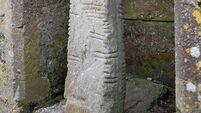The reward that cost €250m and was never claimed
IT started with a small advertisement which was to act as the lid of a Pandora’s Box. On July 3, 1995, hidden among the low-cost getaway offers on the back page of The Irish Times, there was a small ad entitled: “£10,000 Reward Fund.”
The money was offered for “information leading to the conviction or indictment of a person or persons for offences relating to land rezoning in the Republic of Ireland”.













